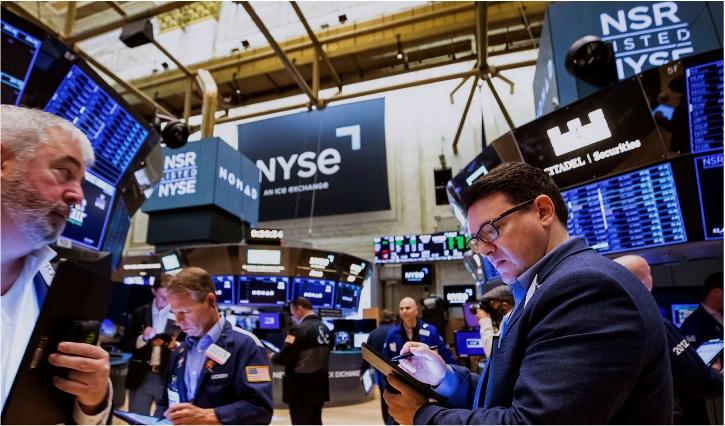

Wall Street ended its worst week since early December, as the S&P 500 fell 1.1% to cap its third straight weekly loss. The Dow Jones Industrial Average, meanwhile, dropped as many as 510 points before closing down 336 points, or 1%, while the Nasdaq composite lost 1.7%.
The stock market has been in a tailspin through February, as a stream of reports have shown that everything from inflation to the job market to spending by shoppers is hotter than expected. This has forced Wall Street to revise its forecasts for how high the Federal Reserve will have to take interest rates and how long to keep them there.
While higher rates can drive down inflation, they also raise the risk of a recession, as they slow the economy and hurt prices for stocks and other investments. The latest reminder of inflation’s impact came on Friday, when a report showed that the measure of inflation preferred by the Fed came in higher than expected, with prices up 4.7% in January compared to a year earlier, after ignoring costs for food and energy because they can swing more quickly than others. This was an acceleration from December’s inflation rate, indicating the wrong momentum, and it was higher than economists’ expectations for 4.3%.
Earlier reports from this month had already shown that inflation at both the consumer and wholesale levels was higher than expected in January. On Friday, other data showed that consumer spending returned to growth in January, rising 1.8% from December. This is pivotal, given that spending by consumers makes up the largest piece of the economy. A separate reading on sentiment among consumers came in slightly stronger than earlier thought, while sales of new homes improved a bit more than expected.
While such strength paired with the remarkably resilient job market raises hope that the economy can avoid a recession in the near term, it can also feed into upward pressure on inflation, with Wall Street worried that it could push the Fed to raise rates even higher and keep them there longer than it otherwise would.
Ross Mayfield, an investment strategy analyst at Baird, said, “It puts the final nail in the coffin in the shift we’ve seen the last several weeks where the market has come around to what the Fed has been saying for a while: rates above 5% and there for longer.”
After earlier doubting that the Fed would raise its key overnight rate as high as it was saying and believing that it may even cut rates later this year, traders are now increasing bets on the Fed’s rate rising to at least 5.25% and staying that high through the end of the year. Currently in a range of 4.50% to 4.75%, it was at virtually zero a year ago.
High rates and inflation increase the risk of a recession down the line, even if the most important part of the economy has been resilient. Mayfield expects the economy’s growth to fall below its long-term trend if not fall into a minor recession, though he’s not anticipating a worst-case downturn.
Expectations for a firmer Fed have caused yields in the Treasury market to shoot higher this month, and they climbed further on Friday. The yield on the 10-year Treasury rose to 3.94% from 3.89% late Thursday, helping to set rates for mortgages and other important loans. The two-year yield, which moves more on expectations for the Fed, rose to 4.79% from 4.71% and is near its highest level since 2007.
Tech and high-growth stocks once again took the brunt of the pressure, with investments seen as the most expensive, riskiest or requiring the longest wait for significant growth among the most vulnerable.